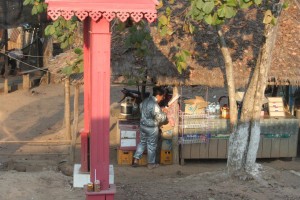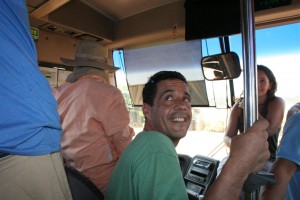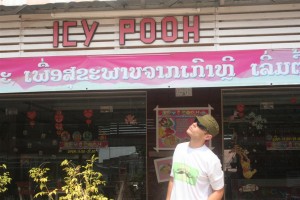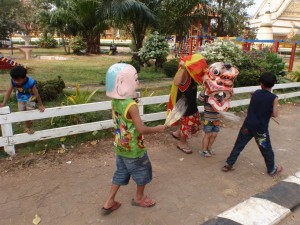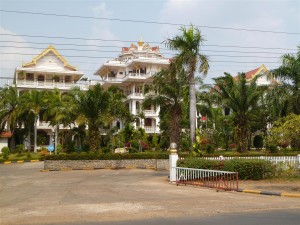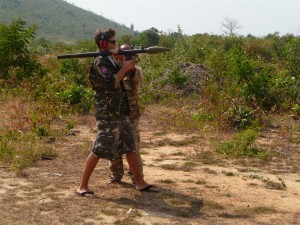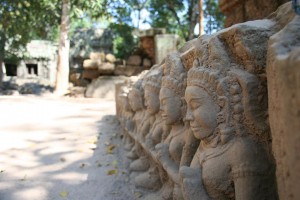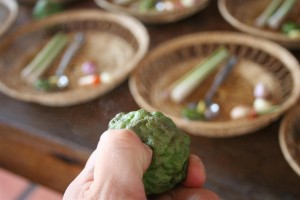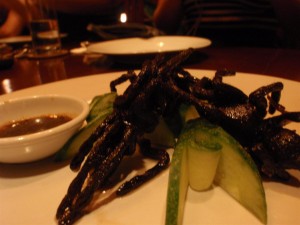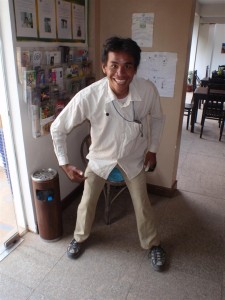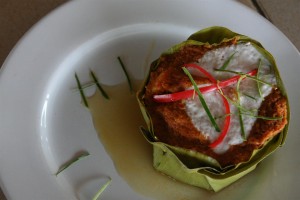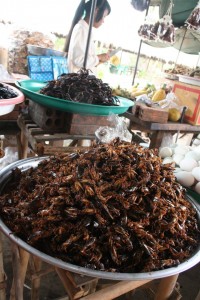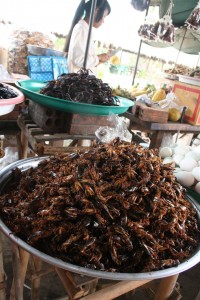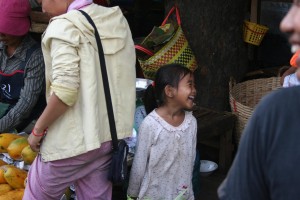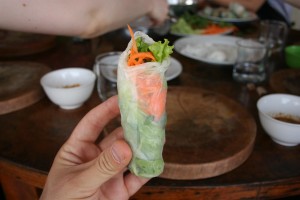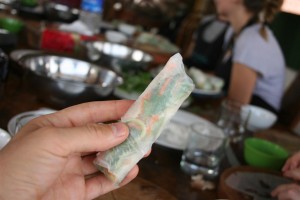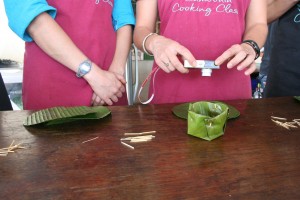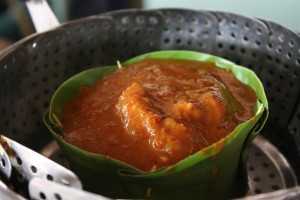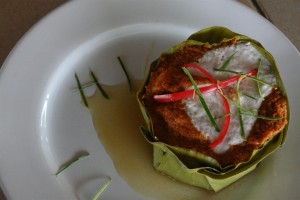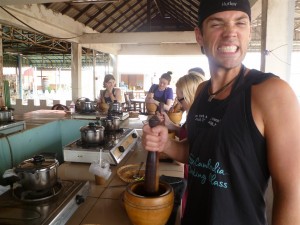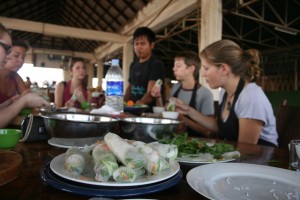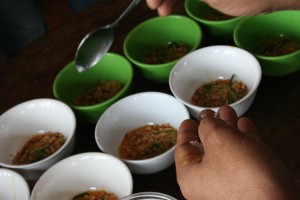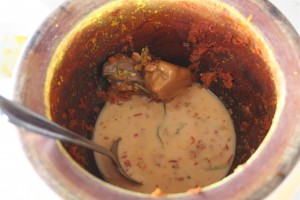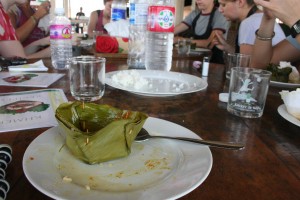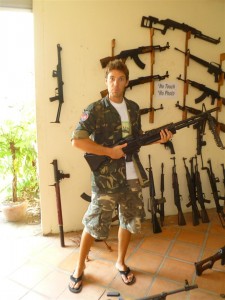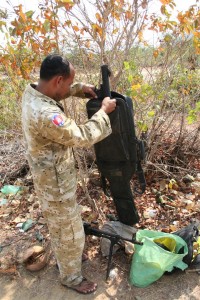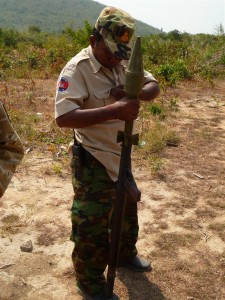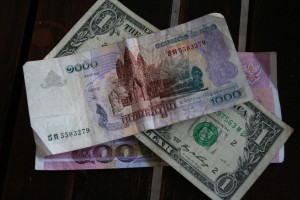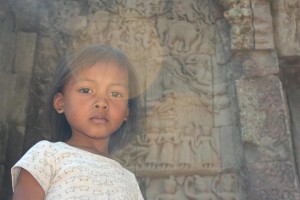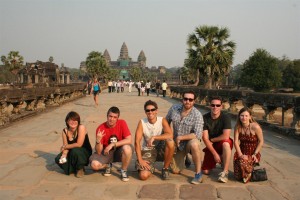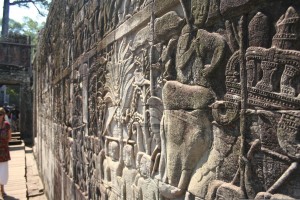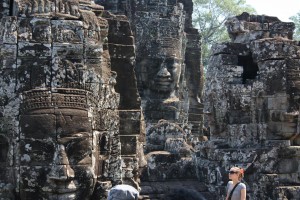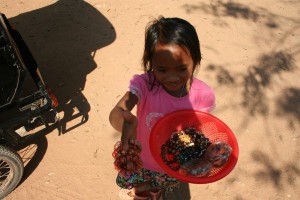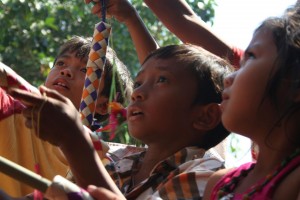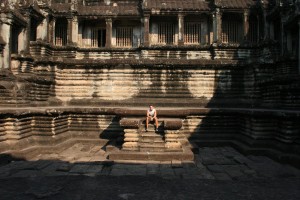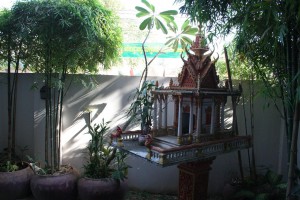It’s no secret I was ready to leave Cambodia. After the gnarly tourist bubble hassle I had been caught up in, I was looking for something else.
Before I left on this trip, I talked to a friend who had been to much of South East Asia. The description I was given of Cambodia was full of praise while the description of Laos was, “filthy dirty.”
While in Asia, whenever I have talked to fellow travelers about Laos, I was painted a very different kind of picture: that of a calm, serene land; unhurried, and largely unconcerned. I was told there were beautiful landscapes, lovely rivers, kind people and open hearts. I couldn’t wait to get there.
Hopping a bus from Phnom Penh to Laos is pretty easy. You can buy a ticket almost anywhere, and they pick you up at your hotel. The ride is ok, depending on how much your bus breaks down and how long they take to get started. Our ride went ok, but the reports I heard from others ranged from having to sleep at the border to having to get out and changing the tire because the bus driver was content to just sit on the side of the road for hours. This last story came from a couple Americans from the Bay Area; Trent and Nick.
Our bus took a while to get started, but once it was under way, things ran relatively smoothly by SE Asian standards. Most of the scenery was what I had come to expect from Cambodia; shanty gatherings with huge piles of garbage strewn about and animals foraging through it for food. We did get to see a spaceman, though.
The border was less imposing than I might have imagined, because after building the official border building, Cambodia apparently decided not to use it. So they switched to a little shack by the roadside.
Finally across the border into Laos, I didn’t have long until we stopped for our exit at the 4000 Islands. Peace and quiet was ours at last! As soon as we stepped out, we met the shuttle bus driver who would take us to the boat to head to Don Dhet.
The shuttle bus driver immediately began shaking us down for money. This wasn’t what I had hoped for.
We made it to the boat, only paying perhaps $1 US more than we needed to, and launched for the islands. This was to be it, an island paradise with sunsets you could taste and the quiet sounds of nature to put you to bed.
This wasn’t what we found. The beach we landed on was little more than a sandy slope up to shacks pumping out all manner of western music. The island was infested with dreadlocked hippies in ruined clothing who smelled worse than they looked. They wandered around with glazed eyes and a shambling walk that probably had something to do with each restaurant advertising magic mushrooms, pot brownies, and even opium. Don Dhet was a disaster area.
Sunset bungalows, the place I had been told to stay, was full. As was nearly every other habitable looking hotel on the island. Finally, after some walking, Zsof and I found a place with an opening. Little more than 4 walls, a bed and a mosquito net. Total cost: $5 a night.
Depositing the bags, Zsofi noticed that she had left her small bag on the bus after it took off. If only we had thought to get contact details for Trent or Nick, we might have had them snag it. Observing a moment of silence for her lost clothes, we took off in search of real food.
Being sequestered on a bus all day can make one a little hungry for real food. Interestingly enough, half of the actual food on the menus was unattainable. For some reason, many of the restaraunts had not bothered to restock their food items. Basic things like beef, salad, bread, and noodles, were not to be found. Eventually, we settled on splitting some Chicken Pad Thai and pretended for a moment we were in Thailand instead of a waterlocked drug addled looney bin.
That night, I got marvelously ill and slept very little. This allowed me the pleasure of being awake most of the night to listen to the populace of the island yelling to one another through all hours of the night. Oh yes, and the toilet stopped working.
The next morning, we walked over to the Sunset side of the island where we were told things were a little more relaxed. It was definitely more scenic, though there was no better room to be had and as the morning wore on and more of the populace arose from stupor we realized the island was not going to get any more enjoyable than it had been the prior night. It was time to go.
At 11 a.m. sharp we were gathered in a shuffling mass of backpacked strangers huddled up in what shade could be had on the derelict beach where we had been deposited the night before waiting for a boat to pick us up. This took about an hour, and required me and another passenger actually getting out to push the boat off the shore, but we made it back to land and the filthy grouping of hovels strung around the dock.
Now it was our turn to sit around for another hour and a half while the bus company decided what to do with all the people who were waiting for a ride to Pakse, the nearby city. This is what they decided.
The bus ride was wonderful. We had some people who had been left at the border, others who had been waiting for hours with no hope of a ride, and all manner of wild stories. The highlight of the trip was the trio of North Americans who had been drinking all morning (continuing through the bus ride) and kept everyones spirits aloft.
After a rather long day, we arrived in nearby Pakse and took stock. The place was quiet. The tuk-tuk driver took us to 5 different hotels before we found an opening and didn’t charge us any more than the original price he had quoted for the single trip. Around town, there was plenty of food to be had and no opium in sight. Things were looking up.
After wandering through the streets of Pakse, we piled into an Indian food restaurant that was rather highly recommended. I ordered the only Indian food I like; Tikka Masala.
In walked Nick and Trent like the were scripted. Heralds of a new era, they brought smiles and news of the missing bag of clothes. They had almost taken the bag with them, but had left it with the bus driver. So close, yet so far away.
The food was great, the conversation was excellent, and following dinner we rolled out to the bus station to see what would happen when we asked about the missing bag.
I love sidecar tuk-tuks.
A Cambodian gentleman, Seyla, informed Zsofi that he knew the drive of the bus and would contact him the following day about the bag and gave her his telephone number.
I was tired and decided to retire, having had a pretty decent day, I thought I would end it on a high note.
The next day, I coasted. Walked around, chatted up the locals, looked for a gym that didn’t exist, even found a store called Icy Poo.
Everyone was great. The tuk-tuk drivers would occasionally say hello, but never harass me. The kids in the street would smile, but never come running up to beg for money. It was a good day.
Finally, the time came to call Seyla and discover the fate of the missing bag. Seyla had good news. The driver had found the bag. He had kept it with him on the bus and would be returning to Pakse with it that night around 9 p.m. and Zsofi could pick it up at any time.
In my estimation, this would be unlikely to happen in the USA. It would be unlikely to happen most places, and probably near impossible in others.
Night fell.
I’ve already mentioned that Laos is a bit slower than Cambodia. No one is hustling, it’s just chill. This means people get up a little later. This means people go home sooner. This means tuk-tuk drivers turn in early.
Faced with empty streets and a 4 kilometer stretch of road to the bus station, this means we are walking.
After a kilometer, we turned up a huge hotel, the Champasak. I figured we ought to give it a shot, so we asked the desk and he called his tuk-tuk friend and in minutes we were zooming off to the bus stop.
Once there, Seyla was nowhere to be found and his phone was busy. The man working the desk asked Zsofi what he looked like, and she replied, “He looks just like everyone else.” This got some laughs.
Soon, though, we found him and true to his word, he had the bag with all of it’s contents.
This is where it gets even better.
Seyla wouldn’t take any money as a finders fee. He wouldn’t even take it to pass it on to the bus driver. His only response was, “That’s not necessary.”
I don’t know how these two countries, Cambodia and Laos, can coincide; can be neighbors.
In Cambodia, the pervading feeling was one of unease. Each time I walked out of the hotel, I was uncertain of whether I would return with my shorts.
Here in Laos, beyond the border regions of the 4000 Islands, no one seems to care that much. People do their jobs, people smile and have fun, but there is a feeling of mild languor around everything. The intersting part is that this country is clean; free of the ceaseless piles of rubbish that choked Cambodia.
This is how I found Laos. Calm, safe, welcoming, a little under-stimulating on the surface but that is a welcome change from Cambodia and the manic attempts to wrangle yet another dollar from the foreigner. I’m ok with being quiet for a while.
I think I’ll stay here a few days and check things out. See the country side, meet some people; I saw a Honda XR 250 for rent down the street that looks promising.
If things go as planned, I’ll may even track down some elephants. 🙂


